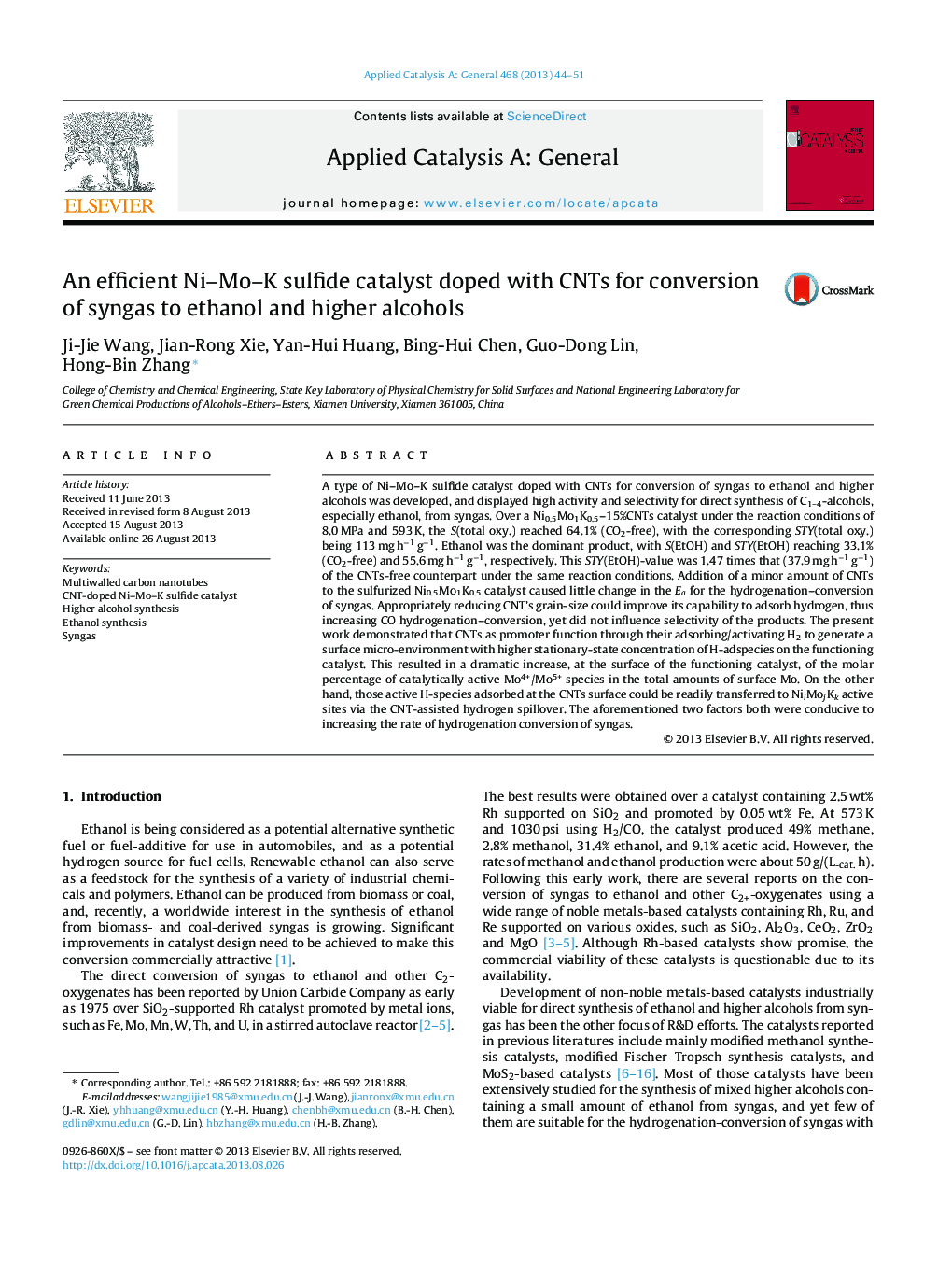| کد مقاله | کد نشریه | سال انتشار | مقاله انگلیسی | نسخه تمام متن |
|---|---|---|---|---|
| 40235 | 45848 | 2013 | 8 صفحه PDF | دانلود رایگان |

• A type of CNT-doped NiMoK sulfide catalyst for syngas converted to EtOH is developed.
• CNTs as promoter function through their sp2-C surface to adsorb and activate hydrogen.
• Appropriately reducing CNT's grain size can improve the promoting effect of CNTs.
A type of Ni–Mo–K sulfide catalyst doped with CNTs for conversion of syngas to ethanol and higher alcohols was developed, and displayed high activity and selectivity for direct synthesis of C1–4-alcohols, especially ethanol, from syngas. Over a Ni0.5Mo1K0.5–15%CNTs catalyst under the reaction conditions of 8.0 MPa and 593 K, the S(total oxy.) reached 64.1% (CO2-free), with the corresponding STY(total oxy.) being 113 mg h−1 g−1. Ethanol was the dominant product, with S(EtOH) and STY(EtOH) reaching 33.1% (CO2-free) and 55.6 mg h−1 g−1, respectively. This STY(EtOH)-value was 1.47 times that (37.9 mg h−1 g−1) of the CNTs-free counterpart under the same reaction conditions. Addition of a minor amount of CNTs to the sulfurized Ni0.5Mo1K0.5 catalyst caused little change in the Ea for the hydrogenation–conversion of syngas. Appropriately reducing CNT's grain-size could improve its capability to adsorb hydrogen, thus increasing CO hydrogenation–conversion, yet did not influence selectivity of the products. The present work demonstrated that CNTs as promoter function through their adsorbing/activating H2 to generate a surface micro-environment with higher stationary-state concentration of H-adspecies on the functioning catalyst. This resulted in a dramatic increase, at the surface of the functioning catalyst, of the molar percentage of catalytically active Mo4+/Mo5+ species in the total amounts of surface Mo. On the other hand, those active H-species adsorbed at the CNTs surface could be readily transferred to NiiMojKk active sites via the CNT-assisted hydrogen spillover. The aforementioned two factors both were conducive to increasing the rate of hydrogenation conversion of syngas.
Figure optionsDownload high-quality image (157 K)Download as PowerPoint slide
Journal: Applied Catalysis A: General - Volume 468, 5 November 2013, Pages 44–51